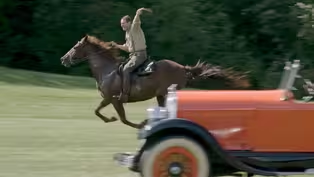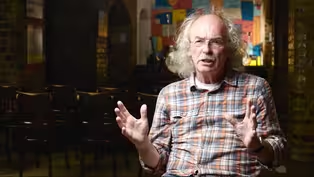
Art and Oil Fortunes
Clip: Season 2 Episode 5 | 4m 10sVideo has Closed Captions
Do we owe our enjoyment of art and antiquities to oil fortunes?
An excerpt from 'Culture.' Do we owe our enjoyment of art and antiquities to oil fortunes?
Problems playing video? | Closed Captioning Feedback
Problems playing video? | Closed Captioning Feedback

Art and Oil Fortunes
Clip: Season 2 Episode 5 | 4m 10sVideo has Closed Captions
An excerpt from 'Culture.' Do we owe our enjoyment of art and antiquities to oil fortunes?
Problems playing video? | Closed Captioning Feedback
How to Watch Power Trip: The Story of Energy
Power Trip: The Story of Energy is available to stream on pbs.org and the free PBS App, available on iPhone, Apple TV, Android TV, Android smartphones, Amazon Fire TV, Amazon Fire Tablet, Roku, Samsung Smart TV, and Vizio.
Buy Now
Providing Support for PBS.org
Learn Moreabout PBS online sponsorship(gentle music) - [Narrator] By the late 1960s he was called the richest man in the world.
Getty traveled the globe collecting cultural objects and art.
- J. Paul Getty began the collection of antiquities in 1939 when he was resident in Rome courting his fifth wife, Theodora Lynch, who became Teddy Getty, and he traveled around museums and archeological sites and dealers.
There was a legal antiquities market in Italy at that time.
Their prices had dropped precipitously during the Depression and always, always wanting a good bargain, he recognized he could get these things at good prices and the value would increase.
The first antiquity he bought is this piece here, this small terracotta group, and it's a modern piece.
It's an imitation or a forgery, and we long thought that Getty was duped.
The auction catalog had Getty's handwritten annotations.
He's thinking, how much is he going to bid?
He writes, 10 pounds, 20 pounds, 30 to 40, and then he writes, modern, question mark.
We can see him thinking the same way he's buying oil leases.
He's taking a calculated risk that he might get something really good for a low price.
It didn't work out in this case, but he wasn't duped.
He was calculating.
Like many collectors, he was deeply invested in his objects.
He wrote whimsical fictions, creating backstories, and he really was especially interested in the histories of his objects.
Although during his lifetime, he had a reputation not only for being very rich, but also being somewhat parsimonious.
He now is, I think, known as an art collector and philanthropist.
(orchestral music) The Getty Villa is a one-to-one replica of most of an ancient Roman villa.
A building we believe was built by the father-in-law of Julius Caesar on the Bay of Naples that was buried but preserved by the eruption of Vesuvius in AD 79.
In 1750, workers were digging a well just outside the royal palace near Herculaneum and they hit this beautiful marble floor, realized they had ancient remains there and the king began the excavations and then eventually drew up this plan showing his tunnels but also the finds.
(orchestral music) Paul Getty had in mind to have a replica of a Roman building to house appropriately his Greek and Roman antiquities.
It's one-to-one in scale and it's better than virtual reality.
It gives people the experience of walking through a Roman luxury villa.
(orchestral music) This is the inner peristyle garden.
Peristyle just means having columns all around, like perimeter.
So we have a small, small peristyle that's square and then the large peristyle out there.
This room was created for Mr. Getty's favorite statue.
On the floor, a replica of the floor first hit by those well diggers in 1750.
(orchestral music) - [Narrator] This is Power Trip.
The Story of Energy.
(gentle music)
Video has Closed Captions
Preview: S2 Ep5 | 30s | Culture and modern energy go hand in hand. (30s)
Video has Closed Captions
Clip: S2 Ep5 | 2m 2s | The energy implications of owning vinyl vs. streaming music. (2m 2s)
Teen Culture: Driven By Energy
Video has Closed Captions
Clip: S2 Ep5 | 1m 24s | Oil changed the way we moved about -- and the products teenagers wanted. (1m 24s)
Providing Support for PBS.org
Learn Moreabout PBS online sponsorship
- Science and Nature

Explore scientific discoveries on television's most acclaimed science documentary series.

- Science and Nature

Capturing the splendor of the natural world, from the African plains to the Antarctic ice.












Support for PBS provided by:


